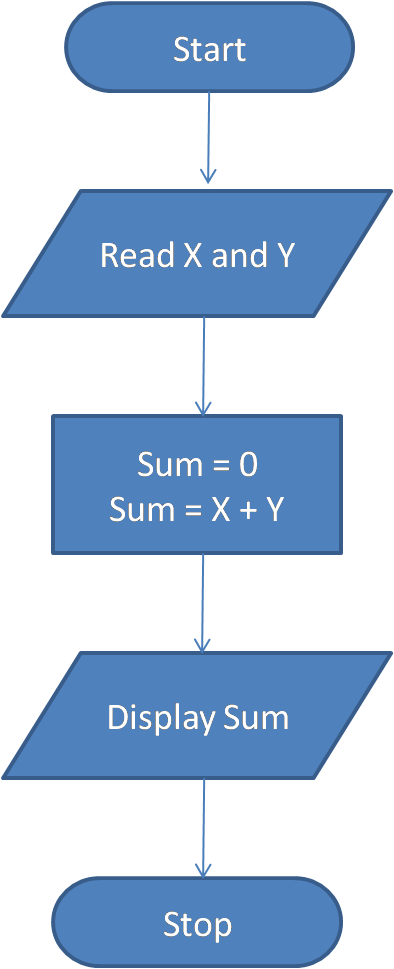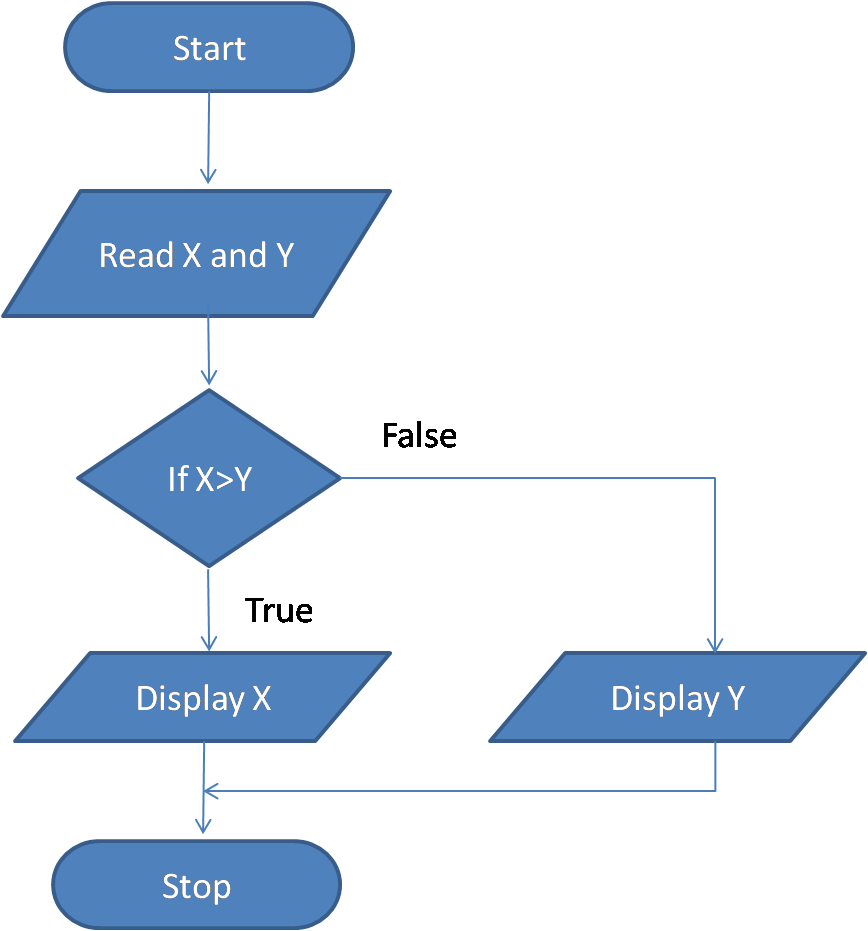This article provides a comprehensive overview of flowchart symbols in computer programming along with examples.
Before going to start reading this article, see our complete C programming tutorial for beginners.
Contents
Flowchart
A flowchart is a diagrammatic or pictorial or visual representation of an algorithm. It is a diagram which consists of various graphic symbols for representing the nature and flow of steps in a program or process.
The fundamental or basic symbols used in a flowchart are:
- Start/Stop symbol
- Input/output symbol
- Process symbol
- Decision or Test symbol
- Loop symbol
- Connector symbol
Start/Stop symbol
The start and end symbols indicate the beginning and the end of the flowchart. This symbol looks like a flat oval. Only one flow line is combined with this kind of symbol. Generally this symbol is used twice in a flowchart, that is, at the beginning and at the end. The start/stop symbol is as shown below:
Input/output symbol
The input/output symbol looks like a parallelogram as shown below. This symbol is used to input and output the data. There are two flow lines connected with the input/output symbol. One line comes to this symbol and the other line goes out from this symbol.
Process symbol
The process symbol looks like a rectangle. It is used for data processing and assigning values to variables. The operations mentioned within the rectangular block will be executed when this kind of block is entered in the flowchart. There are two flow lines associated with this symbol. The process symbol is as shown below:
Decision/Test symbol
The decision symbol is like a diamond/rhombus. This symbol is used to take one of the decisions. Depending on the condition the decision block selects one of the alternatives. While solving a problem, one can take a single alternative or two or multiple alternatives, depending on the situation. A single alternative decision symbol is shown below:
Loop Symbol
This symbol looks like a hexagon. This symbol is used for implementing loops. Four flow lines are associated with this symbol. Two lines are used to indicate the sequence of the program and the remaining two are used to show the looping area, that is from the beginning to the end. Loop symbol is as shown below:
Connector Symbol
The connector symbol is a circle. It is used to establish the connection whenever it is impossible to directly join two parts in a flowchart. Quite often, the two parts of the flowchart may be on two separate pages. In such case, a connector can be used for joining the two parts. Only one flow line is associated with this symbol. It is as shown below:
Flowchart Examples
Problem: Draw a flowchart for adding two integers.
Flowchart for adding two integers
Problem: Draw a flowchart to find the greatest number among two integers.
Flowchart for finding greatest of two numbers
Next, you will learn about basic programming terminology or concepts.

Suryateja Pericherla, at present is a Research Scholar (full-time Ph.D.) in the Dept. of Computer Science & Systems Engineering at Andhra University, Visakhapatnam. Previously worked as an Associate Professor in the Dept. of CSE at Vishnu Institute of Technology, India.
He has 11+ years of teaching experience and is an individual researcher whose research interests are Cloud Computing, Internet of Things, Computer Security, Network Security and Blockchain.
He is a member of professional societies like IEEE, ACM, CSI and ISCA. He published several research papers which are indexed by SCIE, WoS, Scopus, Springer and others.












Leave a Reply